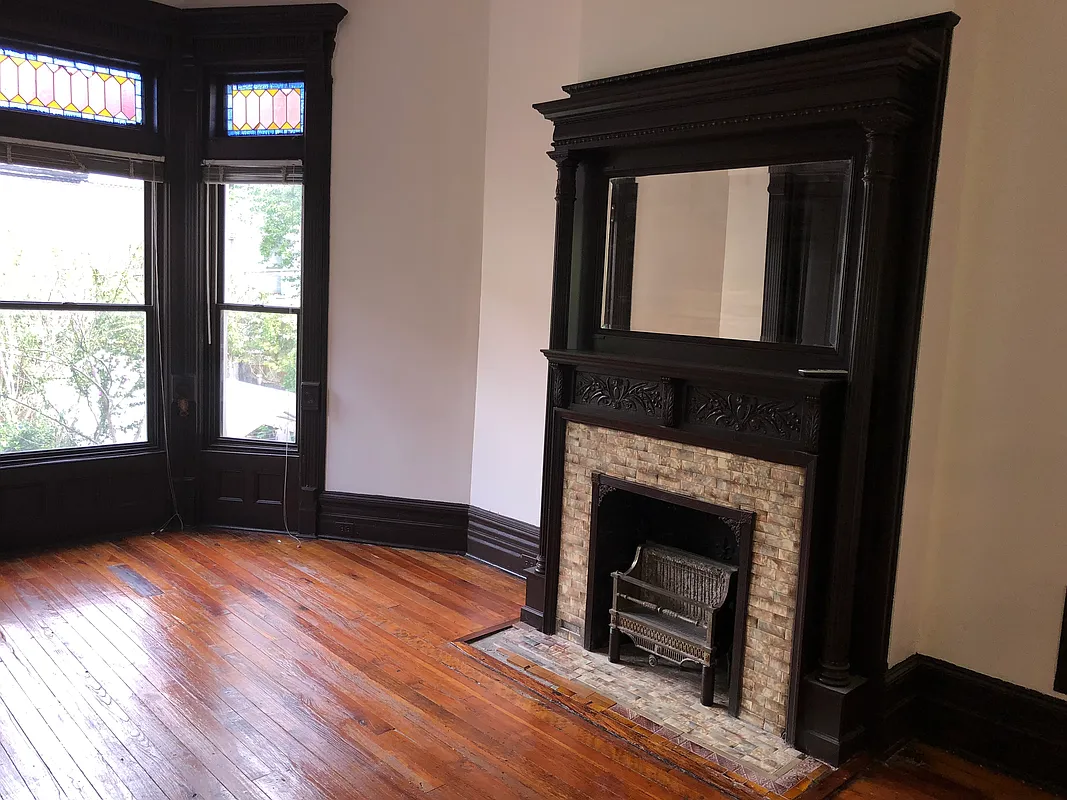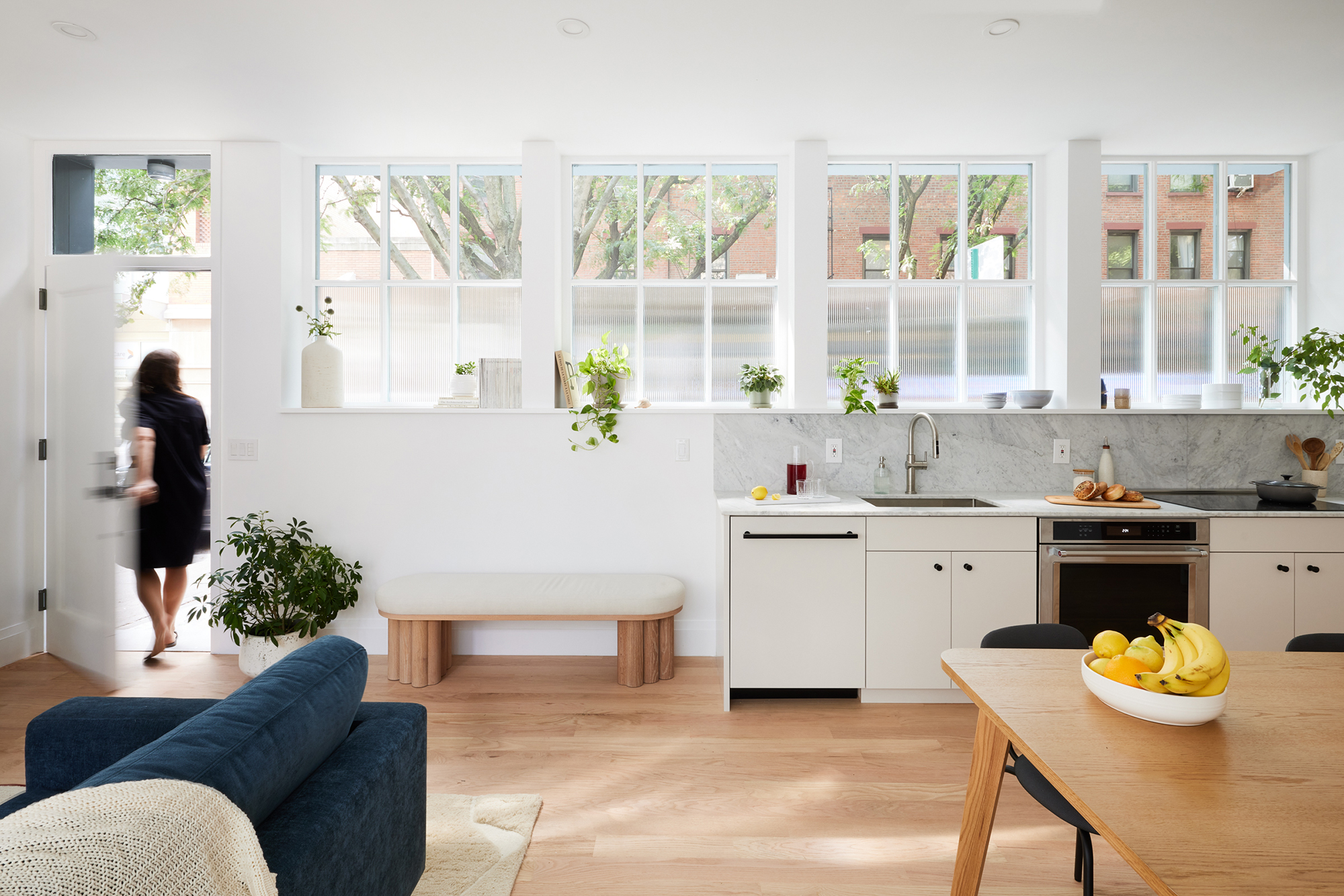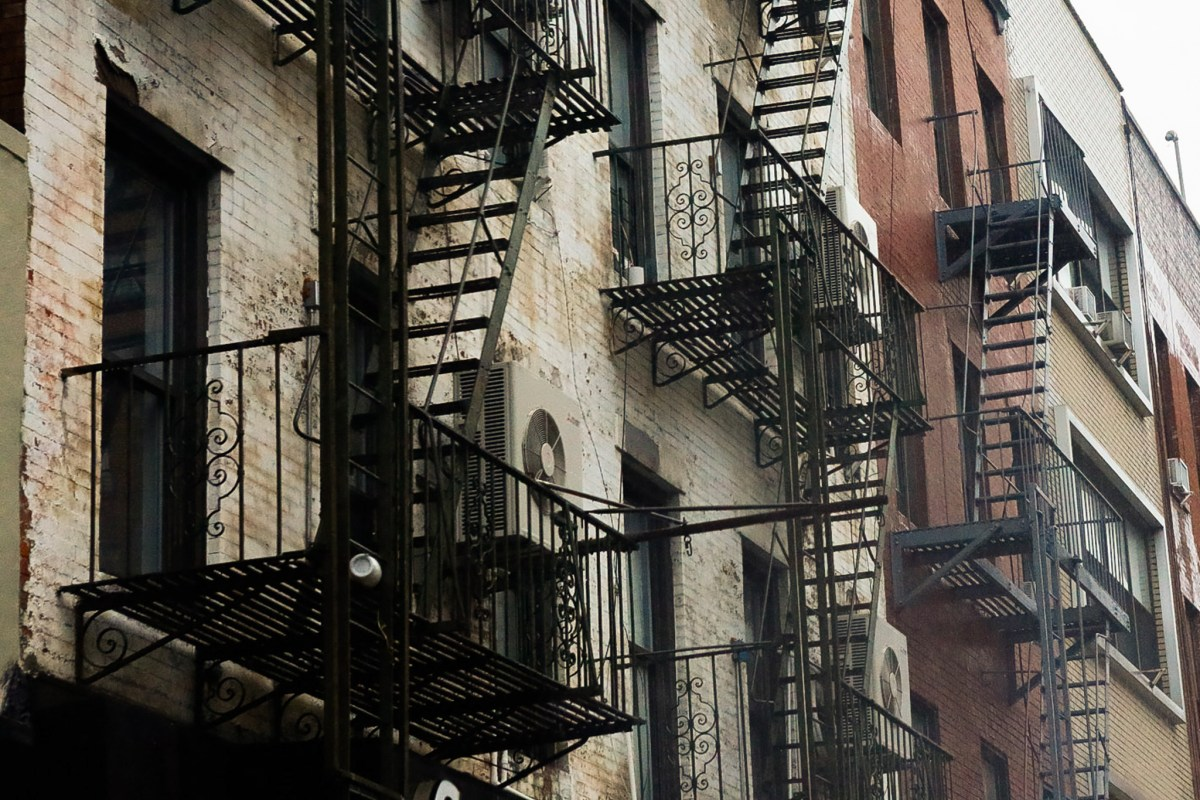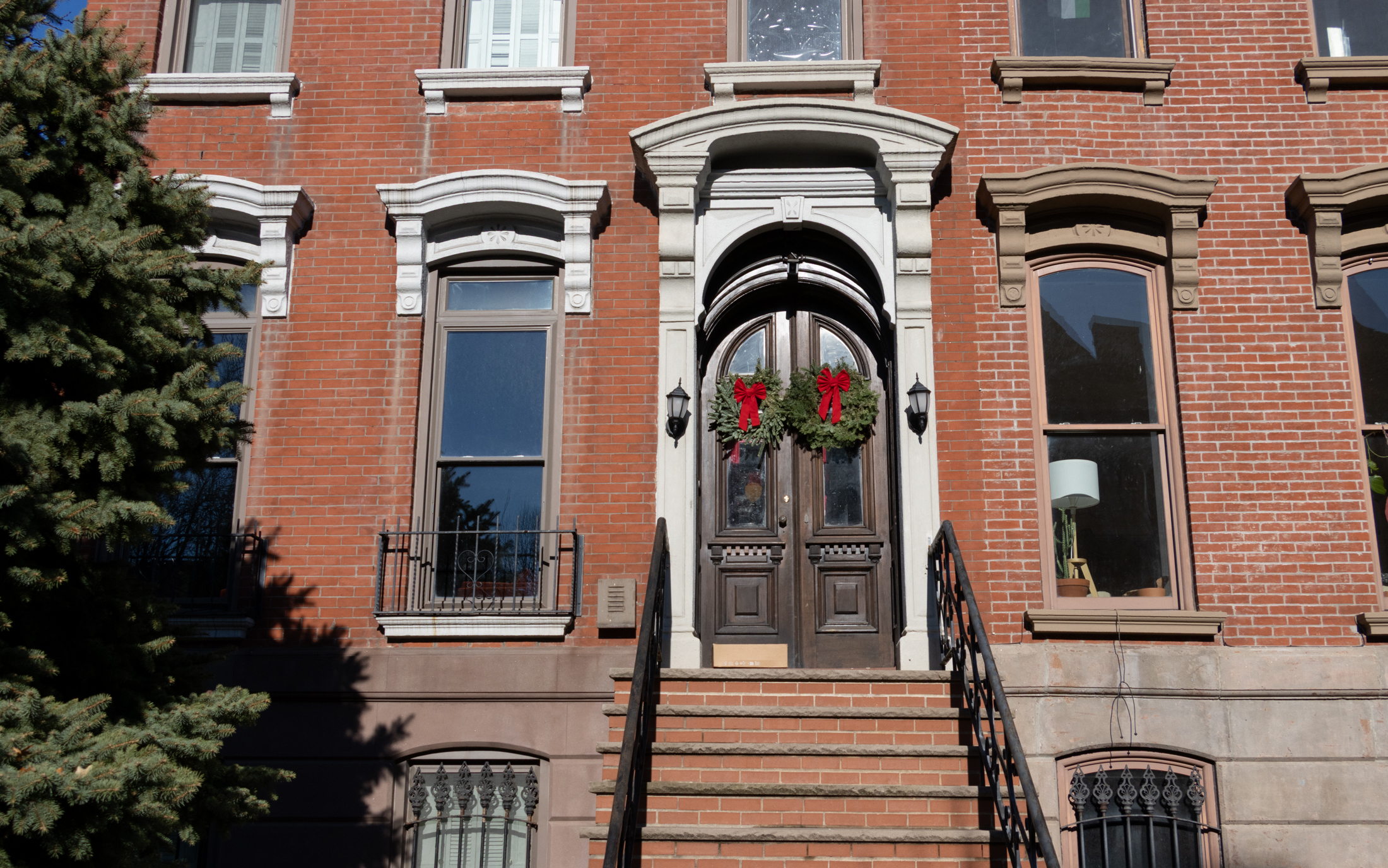New Bed-Stuy More Like Old Bed-Stuy?
Bedford Stuyvesant was the childhood home of both Billy Joel Norman Mailer and Lena Horne, reports Globe St., and it’s posed to become such an artistically, economically and racially diverse neighborhood again. “In recent years, Bed-Stuy’s population has begun rebounding and the demographic mix of that population has been diversifying. Those with a historical bent…


Bedford Stuyvesant was the childhood home of both Billy Joel Norman Mailer and Lena Horne, reports Globe St., and it’s posed to become such an artistically, economically and racially diverse neighborhood again. “In recent years, Bed-Stuy’s population has begun rebounding and the demographic mix of that population has been diversifying. Those with a historical bent might point out that the demographics are returning to the kind of diversity seen here in former years.” Of course, some of that is code for white people moving in, and as we know from yesterday’s discussion of the reversal of what demographers call “white flight,” that doesn’t necessarily mean a neighorhood’s on the upswing. Here’s what they report it has going for it: Last year, the Bed-Stuy Gateway Business Improvement District was formed; most of the area still qualifies for the 421-a tax abatement program, despite changes to it in July; and they’ve seen an influx of retail — Home Depot, Applebee’s and a consumer banking center are cited. Wait, aren’t we the borough of Mom and Pop shops?
A Tree Grows in Bed-Stuy [Globe St]
Brooklyn Brownstones. Photo by sfcityscape.





Amzi, although I think there is a lot the city could do to spur economic development, I don’t think we can blame them for the lack of better retail or businesses in general, on Fulton.
Recent financial news aside, which is going to put everything into slo-mo here, it’s up to landlords, business owners and the public to do the bulk of the improving. Absentee landlords who care nothing about the neighborhood, or their property, other than getting the rent, are a big problem.
Business owners who give us crap in terms of cleanliness and merchandise quality and selection, are also a huge problem. Then we have customers. Sadly, there are still too many problems with shoplifting, crime, and stupid behavior. And to be fair, too many problems with store personnel who assume we all steal, and businesses that look as tenuous as the cheap fixtures they display their goods on.
We need to demand better. The power of the purse is not utilized in our communities to force changes that any group, black, white, have, havenot, can agree on. We also need some entrepeneurial go-getters to take a big risk, rent these spaces as they become available, and bump it up a notch to higher quality retail, groceries, restaurants. If one is successful, others will follow, and perhaps the older stores will see the success, and do some upgrading.
One can only hope.
I agree Montrose Morris. I think you are right about store owners in the area… I think that we do need more people that live and work in the area. I would support a neighbors faster than a stranger.
Most of the shops on 7th Ave and 5th are run by neighborhood people and that is how they can afford to stay open later hours.
The thing I would like to see is Fulton street turn around. It is nice to see Tompkins and Lewis and now Malcolm X have there little commercial renaissance but I think the area is not going to really take off until Fulton Street has a total makeover. I also think that Nostrand and Bedford need the same makeover until then it is going to be a long road for the area of Bedford Stuyvesant and Crown Heights.
I really think that Fulton, Nostrand and Bedford are key to the success of this neighborhood. Fulton in Bedford Stuyvesant should look like Fulton in Ft. Greene with trees, markets, quality shops and sit down restaurants. We could use one less Popeyes and Mick D’s making the teens hyper and fat. I have no idea what the hold up on the Fulton makeover is the city really seems to be moving slow.
LC Arnett, well said, indeed. Amzi Hill, also very interesting. One of the reasons I love history so much is the opportunity to hear these stories, and the stories that NOP and others tell. Between the time our neighborhoods were built and now, are 100 years of life, generations of all kinds of people living in these buildings, running businesses, sending their kids to schools. Putting names and faces on these people helps us appreciate what we’ve got. I agree with LC that I welcome anyone who is vested in the community and respectful of its history and those around them.
I get angry when I don’t see the respect. Pierre, mon ami,l’argent change tout. I still see that article as a modern equivelent of the old advertisements for the Great Oklahoma Land Rush of the 19th Century. You know – Land for sale, empty and cheap, get it now before it’s gone. Flowing rivers, rolling hills and verdent fields. Just substitute commercial streets, good transportation and opportunities for development for the rivers and fields. Just call me cynical, but that’s how I see it.
My comments on Middle Eastern and African shopkeepers were to illustrate that the existing retail shops are not run by people who will keep and spend that money in the community. Most do not live here. Also employing family is indeed a time honored tradition, and there is nothing inherently wrong or sinister about that, but it does not provide jobs for local people. I am not making any value judgement on that reality, I applaud people, some of whom can’t speak English, making their way in this country, that is commendable, laudable and the way great commercial empires are built. I would like to see jobs for my community, not just retail, but retail is a start.
I fully admit I usually have more questions than answers. I just think it is important foe someone to be asking them. How can Bed Stuy, and other similar neighborhoods, grow, make room for anyone who wants to come here, change, improve, gentrify, if you will, but also find a way to bring others along on this ride. We can’t just keep pushing the bottom tier out to another undesirable neighborhood. In the next 30 years, there will be no undesirable neighborhoods.
I am a genealogist I have done the the research in my southwest section on Bedford Stuyvesant from 1880-1930 page after page on the census records I see W in the race column. In the 1930s you see a Col but they are few and in far between. In the 1920s I saw a family that lived on Macon that had Mu as the race but the head of house and his wife are born in Portugal. My grandfathers brother was black and from Virginia came to BS (MacDonough St btw marcy &t) in 1932 and the only way he got his place is because he looked white> When his wife joined him a few months later the landlord wanted to put them out. When his sister came a few years later she brought a house around the corner on Macon with my grandfather posing as her husband. If my grandaunt and her brownskin husband would have come to the closing, the bank would have denied them the loan. It was not easy to for blacks to get into BS in the 30s and 40s and today prices are so high it is like a flashback.
And also, I’m not entirely sure what you mean, LC Arnett, when you talk about turning Brooklyn into Ithaca, Minneapolis or Portland, and what in particular about any of those places would not be welcome in Bed-Stuy.
LC Arnett – Well said, but I think the constant is that the Bed-Stuy “flavor” that exists today will change, that’s just the way it is and always will be in a dynamic city, and frankly, it’s what makes it interesting imo. To be offended by people of different backgrounds wanting different amenities, good and services (like your bagels example) when they move into a neighborhood where they are the minority seems a bit silly. If they can open such shops etc and they are supported, then fine. If there is no desire or need, then they won’t succeed.
Yes, LC Arnett, well said.
But who remembers when the Lower East Side was called “Little Germany” before Germans moved to Yorkville? And what’s left of them in Yorkville these days?
And what about the “old” Dutch families who lived in the brownstones around Madison Square whose lives were recounted by Edith Wharton? Gone for more than 100 years!
Or the Italians in East Harlem, the WASPS around Bowling Green, and the African Americans in the Village? Gone, gone, gone.
That’s New York — and Brooklyn — for you. For better or worse.
NOP
Amzi, that’s because Crooklyn was filmed on Arlington. So it WAS a movie set.
LC Arnett, that is beautifully said.